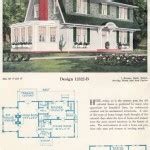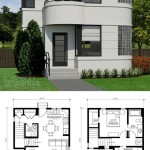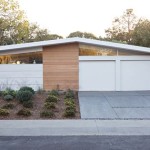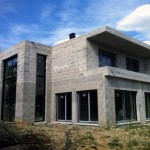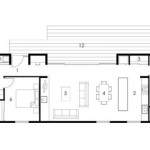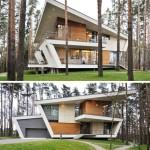Design Your Lakeside Retreat: Exploring Small Lake Home House Plans (Free)
The allure of lakeside living is undeniable. The tranquility of the water, the recreational opportunities, and the connection with nature draw many to seek refuge in lakeside homes. For those considering a smaller footprint, small lake home house plans offer a compelling solution, balancing comfort, functionality, and affordability. Furthermore, the availability of "free" plans, while needing careful evaluation, provides a starting point for the design process.
Designing a small lake home requires careful consideration of space utilization, maximizing views, and integrating with the surrounding environment. It is a process that blends practicality with aesthetic appeal, ensuring the final product is a retreat that serves as both a functional living space and a personal sanctuary. While the term "free" is appealing, it is essential to understand the types of free plans available and the implications of using them.
Understanding the Landscape of "Free" Lake Home House Plans
The term "free" when associated with house plans should be approached with caution. While genuine free plans exist, understanding their origins and limitations is crucial. Often, "free" plans are offered for marketing purposes, acting as a lead generation tool for architectural firms or building material suppliers. These plans may be simplified versions of more comprehensive designs, lacking the detailed specifications and structural engineering needed for construction.
Another source of free plans is historical archives or older designs that have entered the public domain. These plans may be outdated in terms of modern building codes and energy efficiency standards. Furthermore, they might not reflect contemporary design preferences regarding open floor plans, kitchen layouts, or bathroom amenities. A careful assessment is needed to determine if such a plan is suitable for adaptation.
Websites dedicated to sharing architectural plans, often supported by advertising or subscription models, also offer free plans. The reliability and quality of these plans can vary significantly. It is important to research the source and, ideally, consult with a construction professional to review the plans before committing to them. Checking online reviews and testimonials regarding the website's plans can provide valuable insight.
Regardless of the source, free house plans typically lack the detailed engineering drawings required for permitting and construction. These drawings, which include structural details, electrical layouts, and plumbing schematics, are essential for ensuring the safety and compliance of the building. Furthermore, they provide contractors with the necessary information to accurately estimate costs and execute the construction effectively.
It's also important to consider copyright. While a plan might be readily available online, it doesn't automatically mean it's in the public domain. Using copyrighted plans without permission can lead to legal issues. Verify the plan's licensing terms before using it for construction.
Key Considerations for Designing a Small Lakeside Home
Designing a small lake home requires careful attention to several key factors. Space optimization is paramount, demanding creative solutions to maximize every square foot. Natural light and ventilation are crucial for creating a comfortable and inviting atmosphere. The orientation of the home, window placement, and the use of skylights can significantly impact the interior environment.
Outdoor living spaces are an integral part of the lakeside experience. Decks, patios, and screened porches extend the living area and provide opportunities to enjoy the surrounding scenery. Consider the prevailing winds and sun exposure when designing these spaces to ensure optimal comfort. Incorporating features such as outdoor kitchens or fire pits can enhance the enjoyment of the outdoor areas.
Integration with the surrounding environment is critical. The design should complement the natural landscape and minimize its environmental impact. Using sustainable building materials, preserving existing vegetation, and implementing erosion control measures can help protect the lake and its ecosystem. Consider local building regulations and zoning ordinances related to waterfront construction.
Storage solutions are essential in a small home. Built-in cabinets, shelving, and multi-functional furniture can help maximize storage space and minimize clutter. Consider incorporating storage areas for outdoor equipment such as kayaks, fishing gear, and gardening tools. Utilizing vertical space with tall cabinets or loft storage can also be beneficial.
Energy efficiency is an important consideration for any home, especially those located near water. Proper insulation, energy-efficient windows and doors, and high-efficiency heating and cooling systems can help reduce energy consumption and lower utility bills. Consider incorporating renewable energy sources such as solar panels or geothermal heating.
The selection of materials should consider the lakeside environment. Choosing durable, weather-resistant materials that can withstand moisture, humidity, and temperature fluctuations is essential. Consider using materials that require minimal maintenance to reduce upkeep and preserve the home's appearance over time.
Accessibility is another factor. Consider the needs of all occupants, including those with mobility limitations. Incorporating features such as wider doorways, ramps, and accessible bathrooms can make the home more comfortable and accessible for everyone.
Modifying and Customizing "Free" House Plans
Even if a "free" house plan appears initially suitable, modifications and customizations are almost always necessary to adapt it to specific site conditions, personal preferences, and local building codes. This process typically involves engaging a qualified architect or building designer to review the plan and make the required adjustments.
The architect will assess the site's topography, soil conditions, and orientation to ensure the plan is appropriate for the location. They will also review local building codes and zoning regulations to ensure compliance. This may involve modifying the plan to meet setback requirements, height restrictions, or other specific regulations.
Customizing the plan to reflect personal preferences is another important aspect of the modification process. This may involve changing the layout of rooms, adding or removing windows, or altering the exterior finishes. The architect can help translate these desires into a functional and aesthetically pleasing design.
Structural engineering calculations are essential to ensure the safety and stability of the building. The architect or a structural engineer will review the plan and perform calculations to determine the appropriate size and placement of beams, columns, and other structural elements. This is particularly important in areas prone to earthquakes, high winds, or heavy snow loads.
Detailed construction drawings are necessary for obtaining building permits and guiding the construction process. These drawings provide contractors with the information they need to accurately estimate costs and execute the construction effectively. The architect will prepare these drawings based on the modified plan and the structural engineering calculations.
Budget considerations are also important. Modifying a "free" plan can add significant costs to the project. It is important to establish a realistic budget and carefully track expenses throughout the design and construction process. The architect can help identify cost-saving opportunities and prioritize modifications based on their impact on the overall design and functionality.
Ultimately, the goal of modifying a "free" house plan is to create a custom-designed lake home that meets individual needs and preferences while remaining within budget and complying with all applicable regulations. This requires a collaborative approach between the homeowner, the architect, and the contractor.
While the prospect of obtaining free lake house plans is appealing, the reality often involves significant modifications and additional costs to ensure the plan is suitable for the specific site, complies with local codes, and reflects individual preferences. A thorough understanding of the limitations of free plans, combined with careful planning and professional guidance, is essential for successfully designing a small lakeside retreat.

3 Bedroom Lake Style House Plan 7623 Haystack

Lake House Plans Waterfront Home Designs
Lake House Plans Blog Homeplans Com

Open Concept Small Lake House Plans Houseplans Blog Com

Lake House Plans Waterfront Home Designs

Modern Lake House Plans Blog Eplans Com

Open Concept Small Lake House Plans Houseplans Blog Com

Lake House Plans Blog Homeplans Com

Lake House Plans Waterfront Monster
:max_bytes(150000):strip_icc()/captains-watch_0-f638f643936b452db73d80e05bbb656f.jpg?strip=all)
30 Best Lake House Plans For Your Dream Vacation Home
Related Posts

